

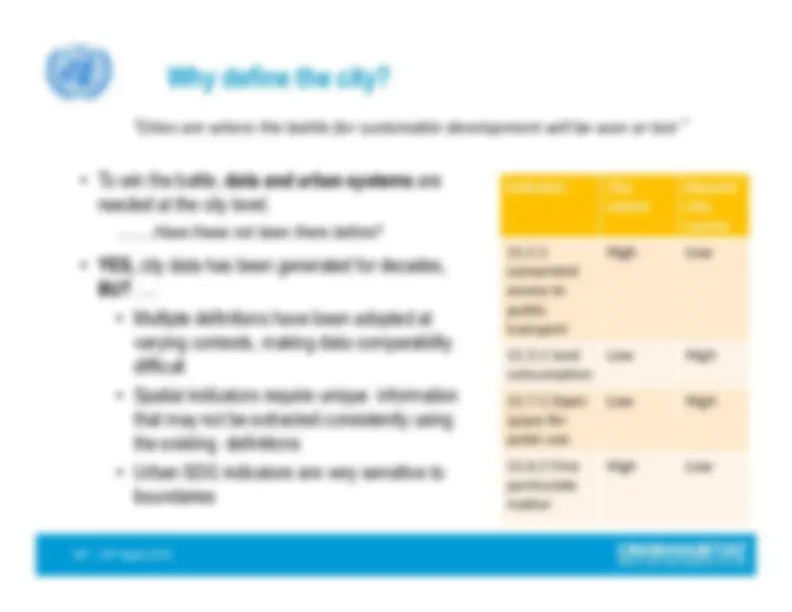
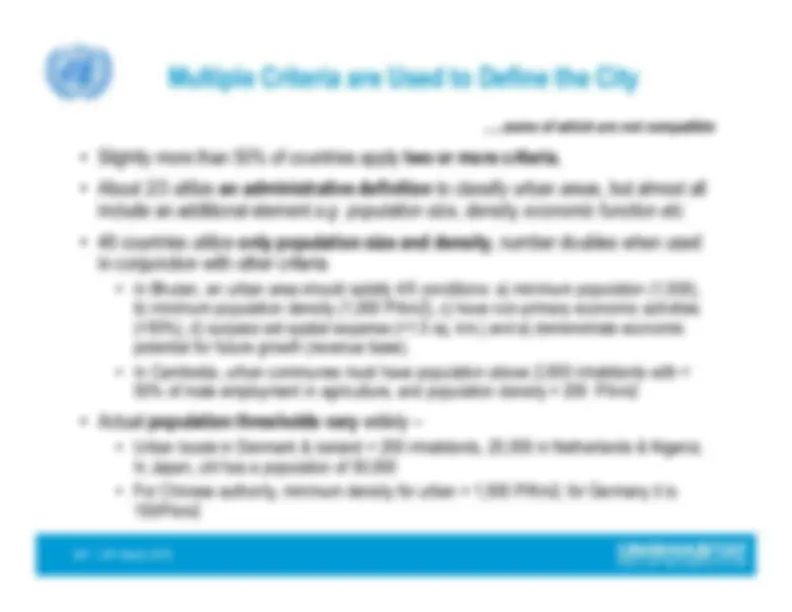
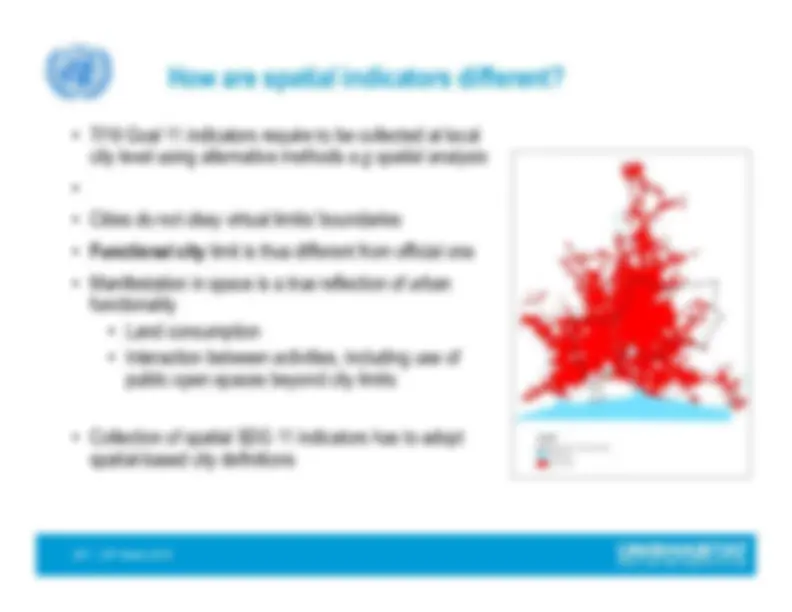
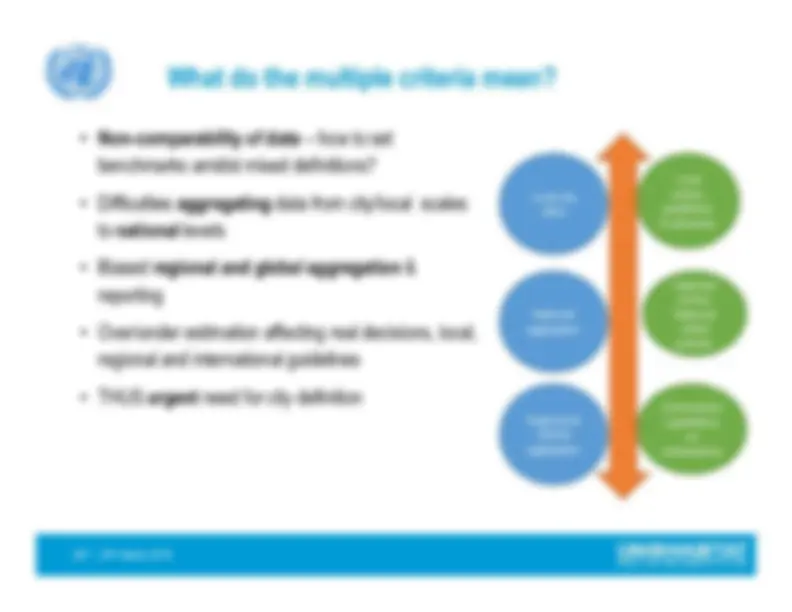
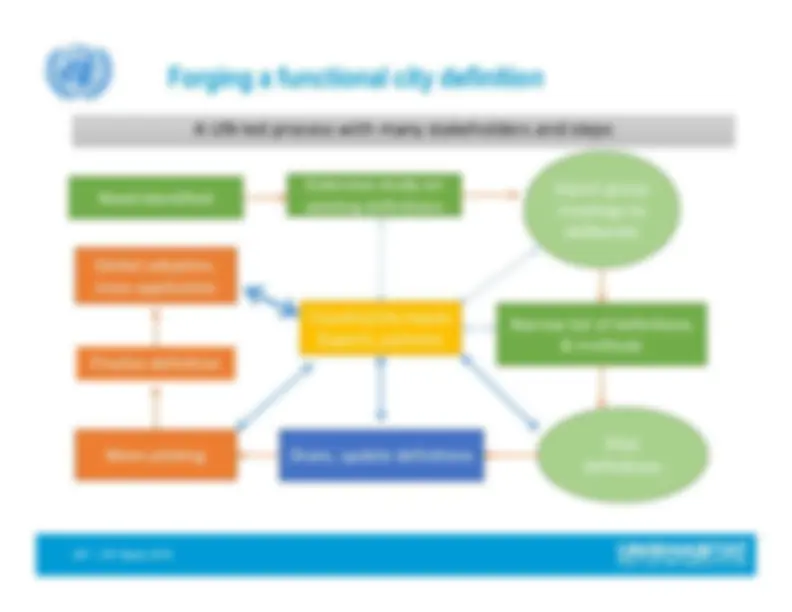
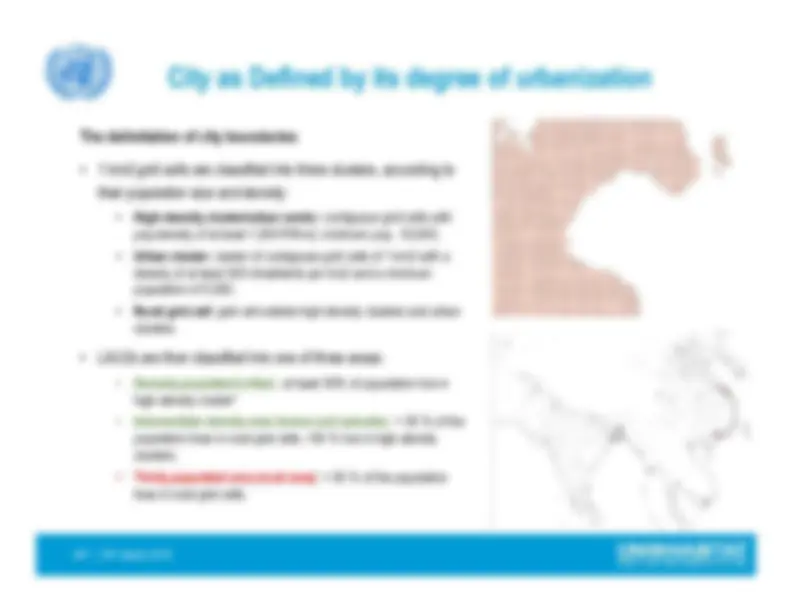
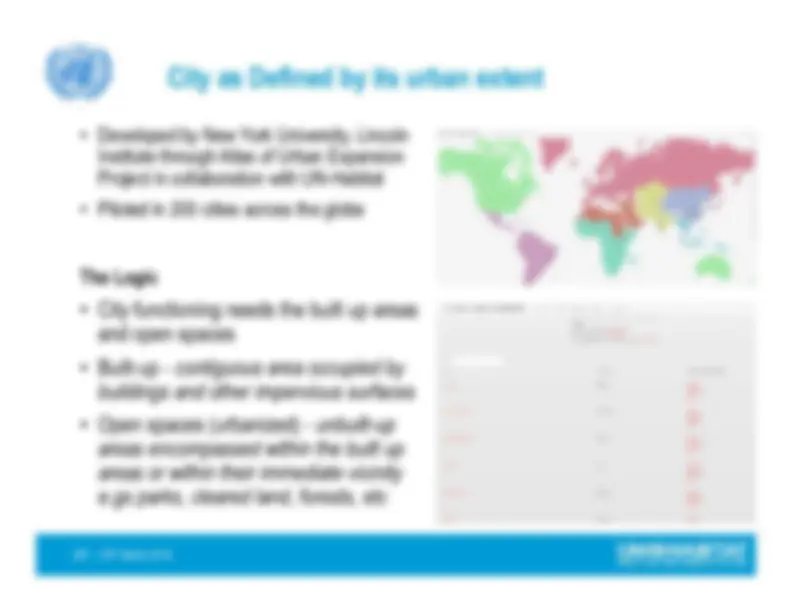
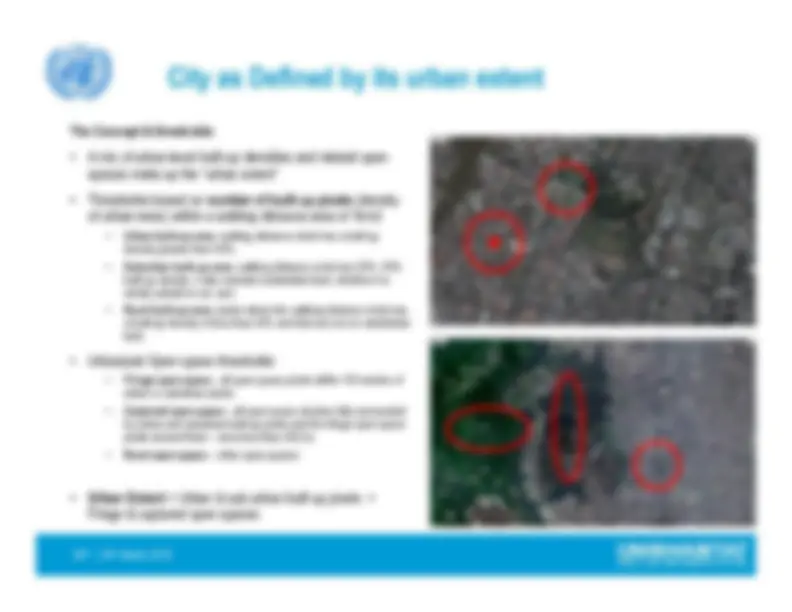
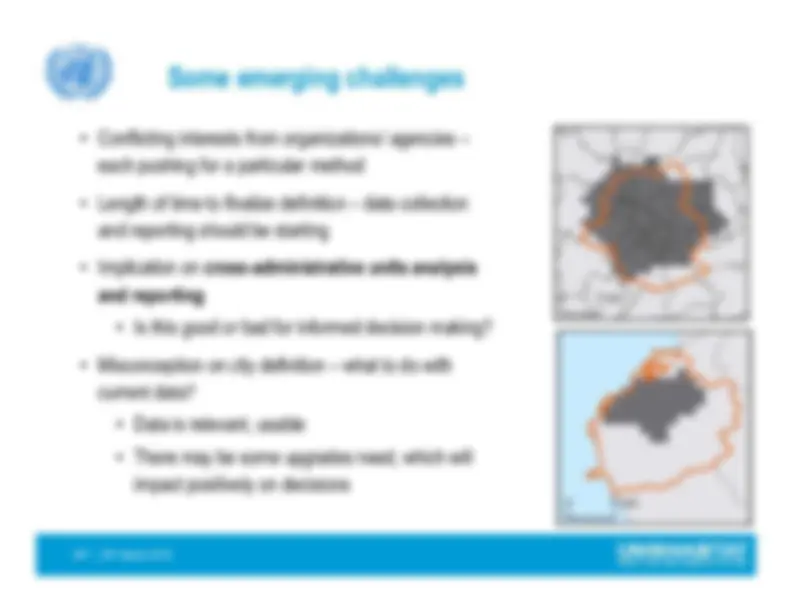
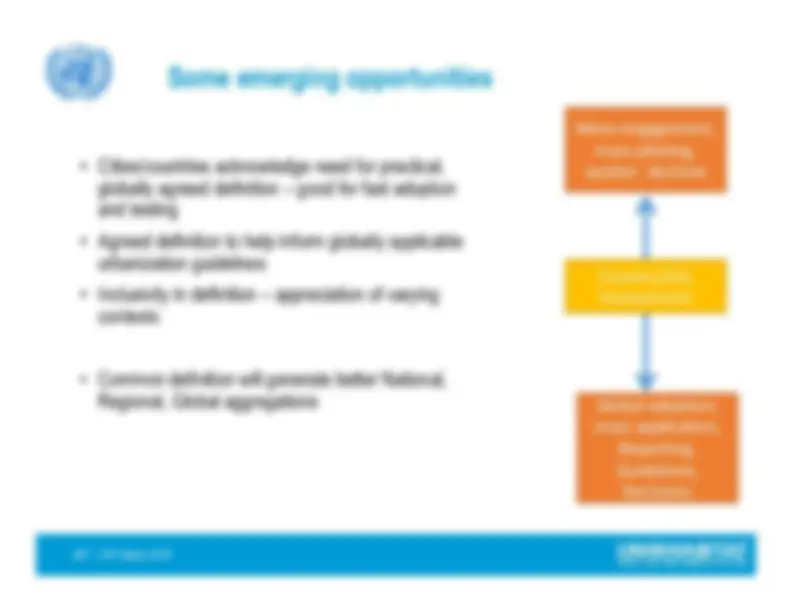





Study with the several resources on Docsity

Earn points by helping other students or get them with a premium plan


Prepare for your exams
Study with the several resources on Docsity

Earn points to download
Earn points by helping other students or get them with a premium plan
Community
Ask the community for help and clear up your study doubts
Discover the best universities in your country according to Docsity users
Free resources
Download our free guides on studying techniques, anxiety management strategies, and thesis advice from Docsity tutors
The importance of defining cities and the challenges of data comparability due to various definitions and their implications on data collection and decision making. It explores the use of functional city limits and the role of national statistical agencies and local authorities in the process. The document also introduces two candidate definitions for a functional city and their implications.
What you will learn
Typology: Study notes
1 / 22

This page cannot be seen from the preview
Don't miss anything!















th^
th^
March 2018
Dennis Mwaniki
Global Urban Observatory,
Research and Capacity Development Branch, UN-Habitat
26
th^
th^
March 2018
Bangkok, Thailand
th^
th^
March 2018
Outline
Why define a city
Multiple definitions and their implications on data comparability
Spatial data needs and functional city definition
Emerging functional city definitions
The process towards a functional city definition
Two candidate definitions
Translation of emerging definitions in space
The role of national statistical agencies and local authorities in the process
Some emerging challenges
Some emerging opportunities
Conclusions
th^
th^
March 2018
To win the battle,
data and urban systems
are
needed at the city level.
……..
Have these not been there before?
city data has been generated for decades,
Multiple definitions have been adopted atvarying contexts, making data comparabilitydifficult
Spatial indicators require unique informationthat may not be extracted consistently usingthe existing definitions
Urban SDG indicators are very sensitive toboundaries
Why define the city?
Indicator
Citycentre
Beyondcitycentre
11.2.1convenientaccess topublictransport
High
Low
11.3.1 landconsumption
Low
High
11.7.1 Openspace forpubic use
Low
High
11.6.2 Fineparticulatematter
High
Low
“
Cities are where the battle for sustainable development will be won or lost
”
th^
th^
March 2018
…..some of which are not compatible
Slightly more than 50% of countries apply
two or more criteria
About 2/3 utilize
an administrative definition
to classify urban areas, but almost all
include an additional element
e.g population size, density, economic function etc
49 countries utilize
only population size and density
, number doubles when used
in conjunction with other criteria
In Bhutan, an urban area should satisfy 4/5 conditions: a) minimum population (1,500),b) minimum population density (1,000 P/km2), c) have non-primary economic activities(>50%), d) surpass set spatial expanse (>1.5 sq. km.) and e) demonstrate economicpotential for future growth (revenue base).
In Cambodia, urban communes must have population above 2,000 inhabitants with <50% of male employment in agriculture, and population density > 200 P/km
Actual
population thresholds vary
widely –
Urban locale in Denmark & Iceland = 200 inhabitants, 20,000 in Netherlands & Nigeria;In Japan,
shi
has a population of 50,
For Chinese authority, minimum density for urban = 1,500 P/Km2; for Germany it is150P/km
Multiple Criteria are Used to Define the City
th^
th^
March 2018
CITY SIZE (sq.km) City Core area = 684Urban Extent = 1,274Metro. area = 3,
26
th^
th^
March 2018
/16 Goal 11 indicators require to be collected at local city level using alternative methods
e.g spatial analysis
Cities do not obey virtual limits/ boundaries
Functional city
limit is thus different from official one
Manifestation in space is a true reflection of urbanfunctionality
Land consumption
Interaction between activities, including use ofpublic open spaces beyond city limits
Collection of spatial SDG 11 indicators has to adoptspatial-based city definitions
How are spatial indicators different?
th^
th^
March 2018
A UN-led process with many stakeholders and steps
Forging a functional city definition
Expert groupmeetings to
deliberate
Need identified
Country/city inputs
Experts, partners
Share, update definitions
Narrow list of definitions
& methods
Pilot
definitions
Global adoption,mass application Finalize definition
Extensive study onexisting definitions
More piloting
th^
th^
March 2018
The common agreement
Thresholds are a must, whether population or spatialcharacter
Better understanding of thresholds equals betterdefinitions/ methods
Acknowledgement
of the UN Population Division
preferred definition of Urban Agglomeration, BUT withmore “
urban threshold” focus
Two (2) candidate definitions
City as Defined by its degree of urbanization
City as Defined by its urban extent
Forging a functional city definition
th^
th^
March 2018
The delimitation of city boundaries •^
1 km2 grid cells are classified into three clusters, according totheir population size and density:
-^
High-density cluster/urban centr
e: contiguous grid cells with
pop.density of at least 1,500 P/Km2, minimum pop. 50,000;
-^
Urban cluster
: cluster of contiguous grid cells of 1 km2 with a
density of at least 300 inhabitants per km2 and a minimumpopulation of 5,000;
-^
Rural grid cell
: grid cell outside high-density clusters and urban
clusters.
-^
LAU2s are then classified into one of three areas:
-^
Densely populated (cities
): at least 50% of population live in
high-density cluster*
-^
Intermediate density area (towns and suburbs
): < 50 % of the
population lives in rural grid cells, <50 % live in high-densityclusters;
-^
Thinly populated area (rural area)
: > 50 % of the population
lives in rural grid cells.
City as Defined by its degree of urbanization
th^
th^
March 2018
Developed by New York University, LincolnInstitute through Atlas of Urban ExpansionProject in collaboration with UN-Habitat
Piloted in 200 cities across the globe
City as Defined by its urban extent
th^
th^
March 2018
Do the two methods produce similar boundaries?
th^
th^
March 2018
Expert deliberations are still ongoing
Engagement of different UN bodies, organizations, expert groups
Next meeting to be held in May 2018
Multiple piloting by different partners ongoing – more cities/countries welcome ….
Based on UN-Habitat direct piloting…
Urban extent alternative is easy to apply at city level using GIS and open access imagery
Method represents true functional character of urban by incorporating built-up and non-built up areas
Method can be applied to delimit multiple city limits in different time periods (including2018) with high accuracy
Cities and National Statistical Agencies are requested to
pilot methods
and provide
feedback -
Data is available to test both methods
Atlas of urbanization
Degree of Urbanization Global Human Settlement Grid
Gridded Population of the World (GPW4)
Open source imagery - Landsat and Sentinel-
Our emphasis is on practical, simple, easy to adapt methods
Which alternative do we recommend?
th^
th^
March 2018
Cities/countries acknowledge need for practical,globally agreed definition – good for fast adoptionand testing
Agreed definition to help inform globally applicableurbanization guidelines
Inclusivity in definition – appreciation of varyingcontexts
Common definition will generate better National,Regional, Global aggregations
Some emerging opportunities
Country/CityInvolvement Global adoption,mass application,
Reporting,Guidelines,Decisions
More engagement,
mass piloting, quicker decision
th^
th^
March 2018
Aim is not to change existing administrative and statistical definitions in countries, butto adopt a functional unit for monitoring
Indicator specific city definitions are proposed
It is the role of National Statistical Agencies and local authorities to collect data andreport, so their input is key throughout the process
Conclusion